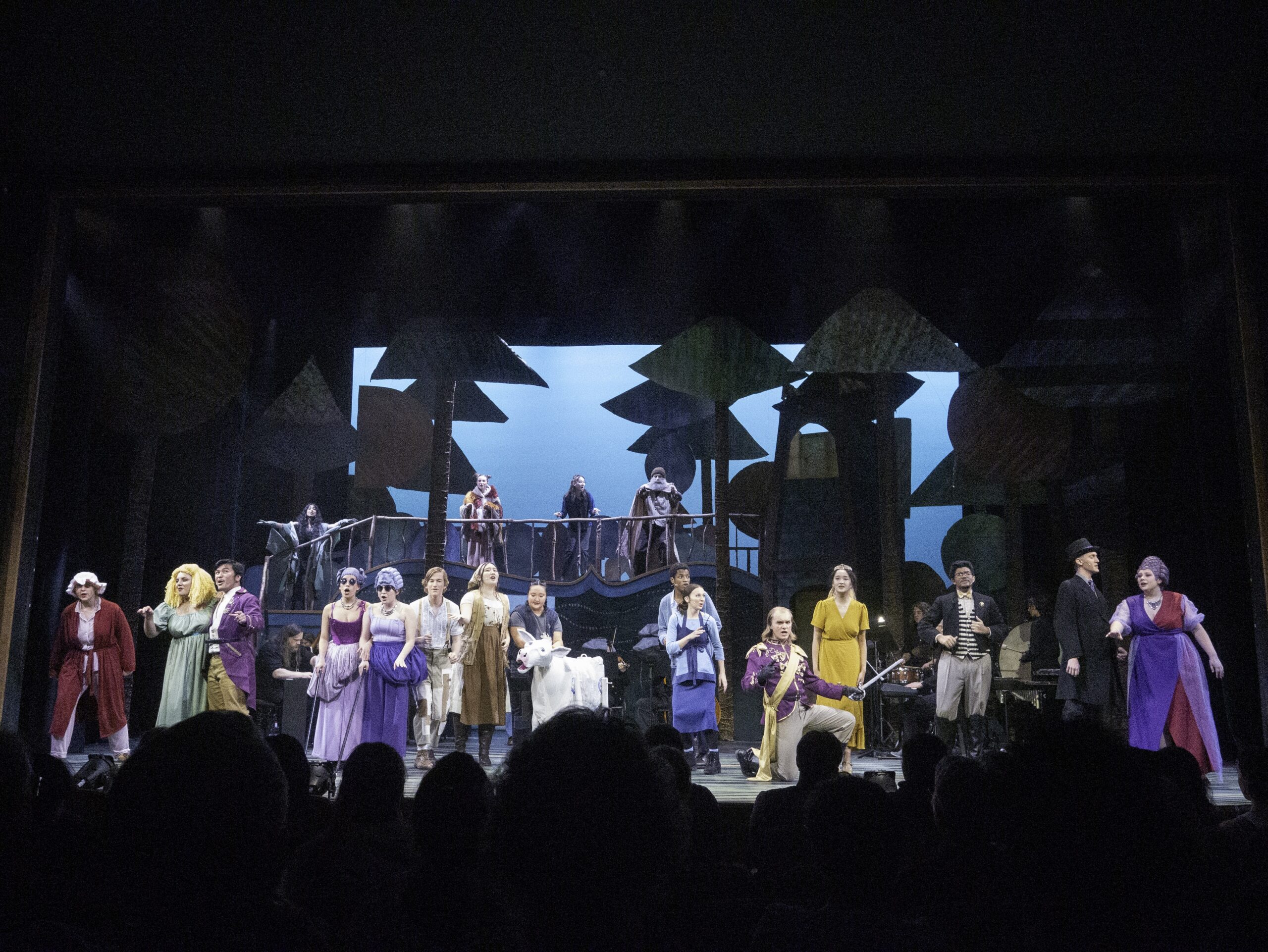Learning about what it means to be human with the musical “Into the Woods”
November 15, 2024
 Isa Cruz
Isa CruzFor two and a half hours, audiences in Pickard Theater grappled with loyalty, guilt and responsibility in a land not quite rooted in any one place or time.
For this year’s fall show, the Department of Theater and Dance presented Stephen Sondheim’s canonical musical “Into the Woods” for a three-night run on Thursday, Friday and Saturday of last week. The show was a hit, selling out each performance.
Professor of Theater Davis Robinson, who directed the show, said that he chose the classic musical for the variety of roles it offers but also kept in mind that the show would be held the weekend after a contentious election.
“I try to pick shows during election weeks that will either help us get through it or that says something about the times we’re in,” he said. “With [“Into the Woods”], it’s metaphoric, it’s fairy tales, and it’s sort of all outside of time and place.”
Both Robinson and Sree Kandhadai ’27, who played the Witch, pointed to the complexity and emotion of Sondheim’s music and lyricism as evidence of the show’s enduring appeal.
“[Sondheim] was a mad genius,” Kandhadai said.
Robinson said that different elements of the production’s design were curated to honor the vision of the late Broadway legend. In contrast to traditional productions, the orchestra was placed onstage with the actors rather than in a pit underneath the stage. Actors ran through channels between sections of the orchestra to get on and off stage.
“I wanted to really integrate [the stage] more, probably the way Sondheim’s brain works, [so] that the music and the action and the storyline are all woven,” Robinson said.
“Into the Woods” is split into two acts: The first brings together characters from a smorgasbord of fairy tales, including from Cinderella and Rapunzel to Little Red Riding Hood and Jack and the Beanstalk and winds their fantastical stories together with Sondheim’s original characters. The second intertwines and extends their stories as the cast navigates ethical questions and existential challenges.
“The second half is what happens when things fall apart. It’s not what you thought, and bigger threats arise,” Robinson said. “It boils down to some pretty dark moments where people are losing everything and realizing all they have left really is each other and to find each other.”
In bringing together different plot lines and characters, Robinson made adjustments to ensure that major events like character deaths occurred on rather than off the stage and using digital projections for the character of the Giant.
“We wanted to see those elements, because they’re part of the story,” Robinson said. “I wanted to see those moments, to have them register.”
The key to bringing these stories together, Robinson said, is the music. Jeff Christmas, a visiting lecturer in music who served as the production’s music director, noted that Sondheim offers a challenging score.
“The music is really difficult,” Christmas said. “At an educational institution, that’s the gig—for students to grow and learn.”
Unlike many other musicals, “Into the Woods” has relatively few ensemble numbers, instead relying largely on solos and duets. Christmas added that this allows actors to infuse their performances with more individuality and emotion.
“It’s closer to an operatic technique,” Christmas said. “You’re trying to portray an individual character.”
The emotional connection goes both ways. Emmanuel Nwodo ’27, who played the Baker, said that he felt his character’s struggles in his performance.
“I definitely started to feel more and more for the character the more runs we did,” Nwodo observed. “You start to actually really feel the emotions of it.”
Amid the show’s myriad plot points, Robinson and Kandhadai explained that Sondheim’s recurring musical patterns help give the show a sense of continuity.
“[Sondheim] loves to take four or five notes and make the whole show sort of bend around those,” Robinson said.
“It’s one of the more interconnected soundtracks I’ve heard,” Kandhadai added. “I feel like everybody, at some point, gets the same motif of five notes that get played when the beans first get dropped into Jack’s hand.”
To Christmas, the interwoven stories and music give “Into the Woods” an enduring appeal.
“It’s just [about] how complicated it is to be human,” he said. “I think Sondheim really challenges us with this text to complicate how we understand what it means to be good, what it means to be human, what it means to be bad, what it means to be selfish, what it means to be right.”
Nwodo echoed this sentiment, pointing to the transition from the song “Your Fault” to another number titled “No One Is Alone.”
“We’re all blaming each other for all these things … and then there’s ‘No One Is Alone,’ which shows that no one’s alone in the blame,” Nwodo said.
The show’s emphasis on imperfect humanity resonated with audience members, including theatergoer Abby Rubin ’27.
“[The cast] talks about how you always need to go into the woods now and again, but you have to just be ready for it,” she said. “You can’t avoid all the risk and the turmoil of the woods, but you have to go through it to get to the other side.”

Comments
Before submitting a comment, please review our comment policy. Some key points from the policy: